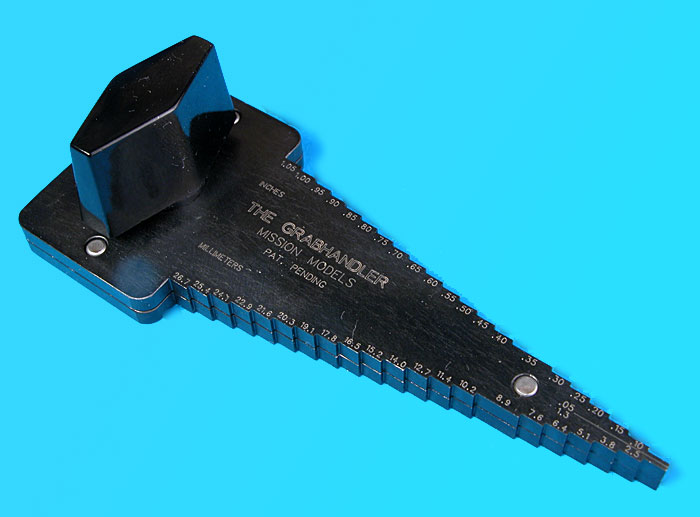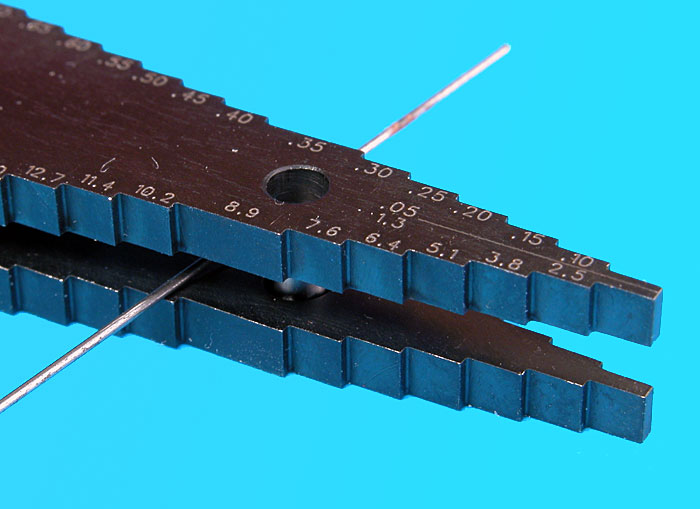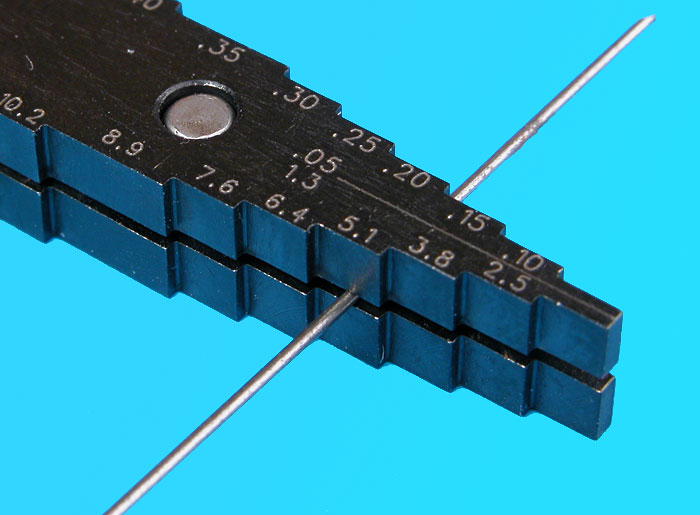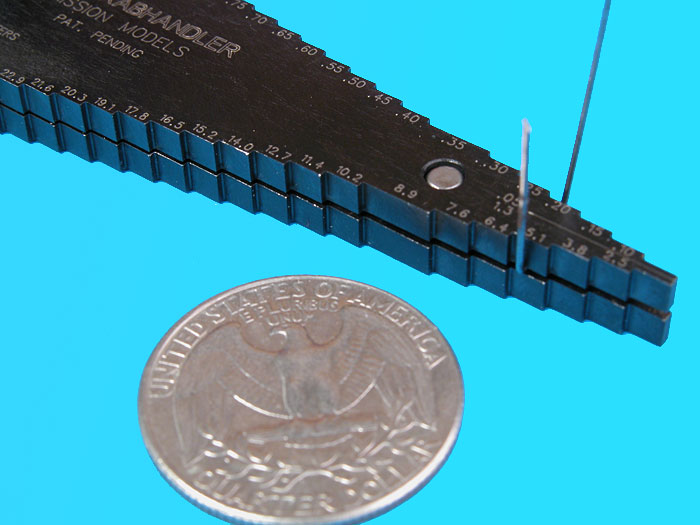|
Grabhandler

Mission Models
S u m m a r y
|
|
Catalogue Number and Description: |
Mission Models
Grabhandler |
| Contents
and Media: |
One 92mm x 39mm steel tool |
| Price: |
USD$55.00 plus
local tax and shipping from Mission Models |
| Review Type: |
FirstLook |
|
Advantages: |
Solid construction;
easy and precise operation; marked in increments of inches and
millimetres; appropriate tool to work with either flat or three
dimensional materials; no assembly required; solidly packed. |
|
Disadvantages: |
Forward alignment pin may
interfere with the removal of larger "handles" |
|
Recommendation: |
Recommended for armour and
ship modellers; and scratch builders. |

HyperScale is proudly supported by
Squadron.com
We are continuously presented with modelling
masterpieces in print and online featuring photo-etched and resin
accessories.
However, there are still some jobs that are best
achieved using basic materials such as copper wire, brass profiles
or steel rod. I frequently use these materials for adding detail to
interior areas of aircraft and to specific parts of military models.
One of the most common tasks for armour modellers is
the fabrication of handrails, guard rails, tie-downs and grab
handles. Photo-etched parts are generally too flat for these items,
and plastic kit parts are often overscale, delicate and/or festooned
with difficult to remove seams. This is where metal wire, rod and
profiles come in very handy.
Typically, it is necessary to replicate between a
few and a whole pile of identical rails, tie-downs or handles for
any given armour modelling project. I have always used a pair of
needle-nose pliers for this job, but it is often a challenge to
create these parts exactly the same size.
Enter the Grabhandler.
Mission Models' Grabhandler is a new tool
specifically for forming grab handles, as the name implies. The tool
is made from two small triangles of CNC steel aligned by three steel
pins. A plastic handle controls a steel thread which opens and
closes the steel jaws. A spring is installed to provide tension,
permitting the tool to remain open when required. The tool feels
very robust and high quality.

The triangular tool is serrated with 21 notches on
each side. The notches are marked in US (from 1/10" to 1.05") and
metric (2.5mm to 26.7mm) increments.
The operation of the tool could hardly be simpler:
-
Wind the handle
counter-clockwise to release the jaws
-
Insert material to
be bent into a handle according to the size required.
-
Turn handle
clockwise to close the jaws
-
Bend material on
both sides of the Grabhandler's serrations
-
Release the handle,
remove the newly formed "handle", and repeat as many times as
necessary

This will be a very quick, precise, reliable,
measurable and repeatable method for forming handles and other
similar shapes. The only problem I can anticipate is that the
forward locating pin might interfere with the removal of
newly-formed handles from the tool. Even so, some planning will
permit the largest handles to be threaded back through the tool
without actually separating the jaws.
I tested my Granhandler review sample out on some
steel wire - piano wire I think - which has proven difficult to bend
with other tools. The Grabhandler held the hard steel securely and
permitted quick and easy bending into a handle profile. It will be
even easier to work with more pliable materials such as brass and
copper.
At USD$55.00, this is not a low-priced tool.
However, "expensive" is in the eye (or perhaps the pocket) of the
purchaser.

If you are a modeller who is looking for a precise
and repeatable way to create handles or similar shapes, the
Grabhandler is the most specific tool I have seen to date for the
task.
Recommended for armour and ship modellers; and
scratch builders.
Thanks to Jon Tamkin from
Mission Models
the preview image and information
Etch Mate is available
from Mission Models
Website

Rreview Text and all Images Copyright © 2004 by
Brett Green
This Page Created on 23 May, 2004
Last updated
24 May, 2004
Back to
HyperScale Main Page |
Home | What's
New | Features
| Gallery |
Reviews | Reference
| Forum
| Search